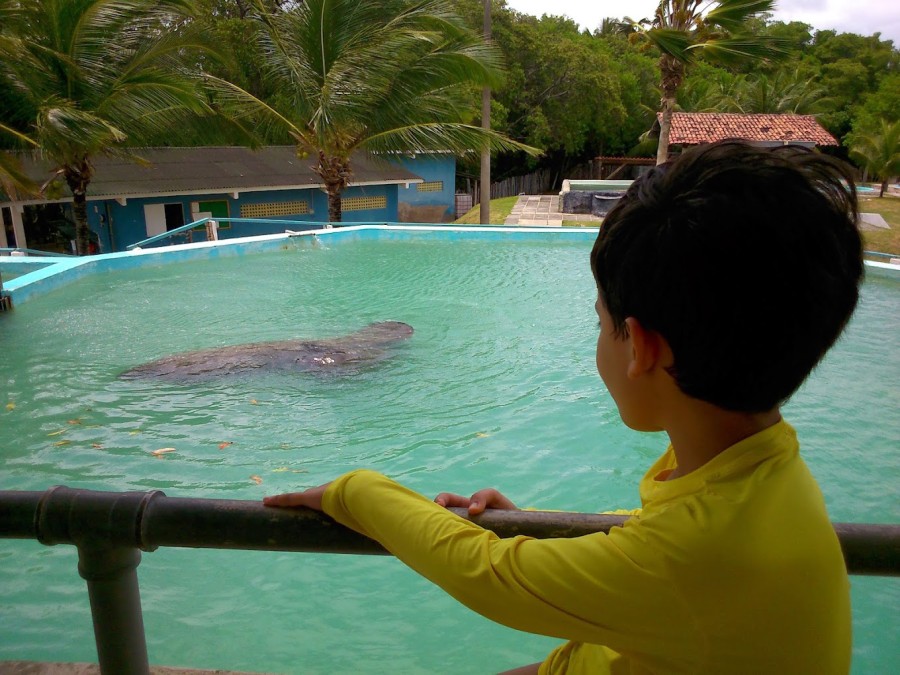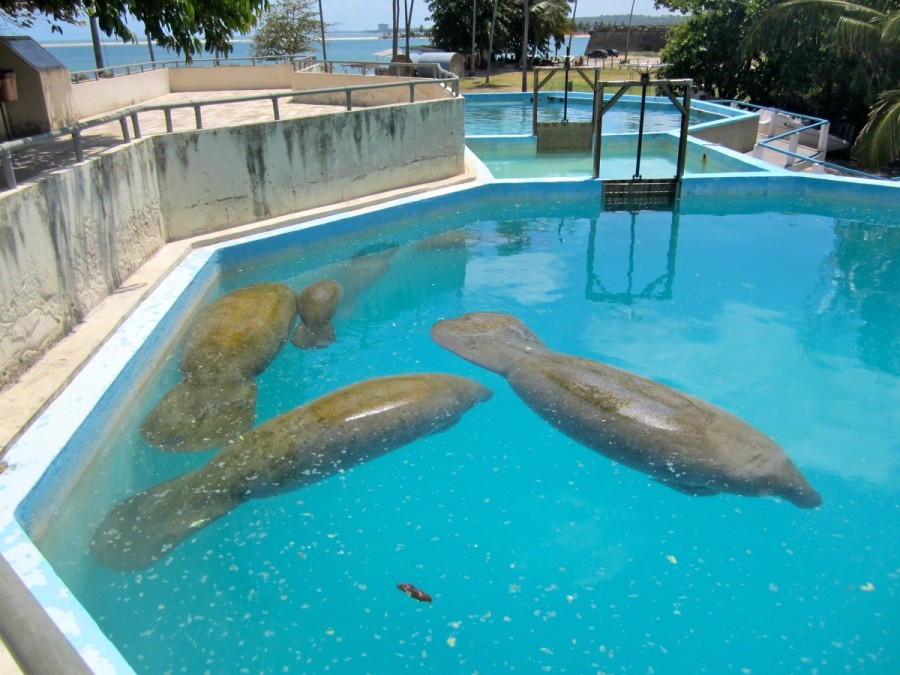By March 2025, renovation work and technical updates at the Peixe-Boi Ecopark at the National Center for Research and Conservation of Aquatic Mammals (CMA) on Itamaracá Island in northeastern Brazil were largely completed. The renewed facility provides a boost to CMA’s preservation efforts and to sustainable tourism on the island. The Penetron System, a concrete waterproofing system, was specified to provide durable protection for the West Indian manatee holding tanks exposed to both positive and negative hydrostatic pressure.
A tropical island situated in the northeast corner of Brazil on the Atlantic Ocean, Ilha de Itamaracá is connected to the mainland by a long road bridge. With a total area of over 66 km2 (>25 mi2), the island has a population of around 27,000 inhabitants. About two thirds of the island is covered by protected rain forest ('Mata Atlantica'), with human inhabitation concentrated mostly along the eastern coastline boasting white sandy beaches. Fishing and tourism are the main pillars of the island’s economy.
The National Center for Research and Conservation of Aquatic Mammals (CMA) on Itamaracá Island is part of the Chico Mendes Institute for Biodiversity Conservation (ICMBio) and plays a crucial role in preserving the West Indian manatee (Trichechus manatus), an endangered species in Brazil. The CMA carries out rescue, rehabilitation, and reintroduction of these animals into their natural habitat, and supports research and environmental education.
The R$ 10 million renovation and modernization of the Peixe-Boi Ecopark on Itamaracá Island is an important part of CMA’s efforts to promote preservation of the West Indian manatee and develop sustainable ecotourism on the island.
“Penetron Brazil was asked to provide a durable waterproofing solution for the Ecopark’s large concrete holding tanks where the manatees are kept,” adds Cláudio Neves Ourives, CEO and Managing Partner of Penetron Brazil. “In particular, the below-grade concrete tank walls needed to withstand both negative and positive pressure.”
An integral waterproofing solution is optimal for below-grade concrete structures confronted with both the positive hydrostatic pressure of the water contained in the tank and the negative hydrostatic pressure of the surrounding groundwater water levels.
Penetron recommended the Penetron System of concrete waterproofing products to ensure the integrity of the manatee tanks. PENETRON, a topical crystalline waterproofing material, was applied to both sides of the concrete tanks to ensure impermeability of the concrete and seal hairline cracks. PENECRETE MORTAR, a crystalline repair grout, was used to seal the construction joints and tie holes.
When applied to a prepared concrete surface, the active ingredients in PENETRON penetrate the concrete and react to moisture to form insoluble crystals throughout the cracks, pores, and voids, becoming an integral part of the concrete matrix.
“Another key advantage is that the Penetron System is completely non-toxic, and NSF 61-certified for potable water applications. The quality of the manatee swimming water remains unaffected by any Penetron crystalline products,” concludes Cláudio Neves Ourives.

Non-toxic & permanent: The Penetron System was used as a durable waterproofing solution for the large concrete holding tanks where the manatees are cared for at the CMA’s Ecopark in Brazil.

Integral concrete waterproofing: For below-grade concrete structures exposed to hydrostatic pressure on both the positive and negative sides, the Penetron System was the optimal solution.



